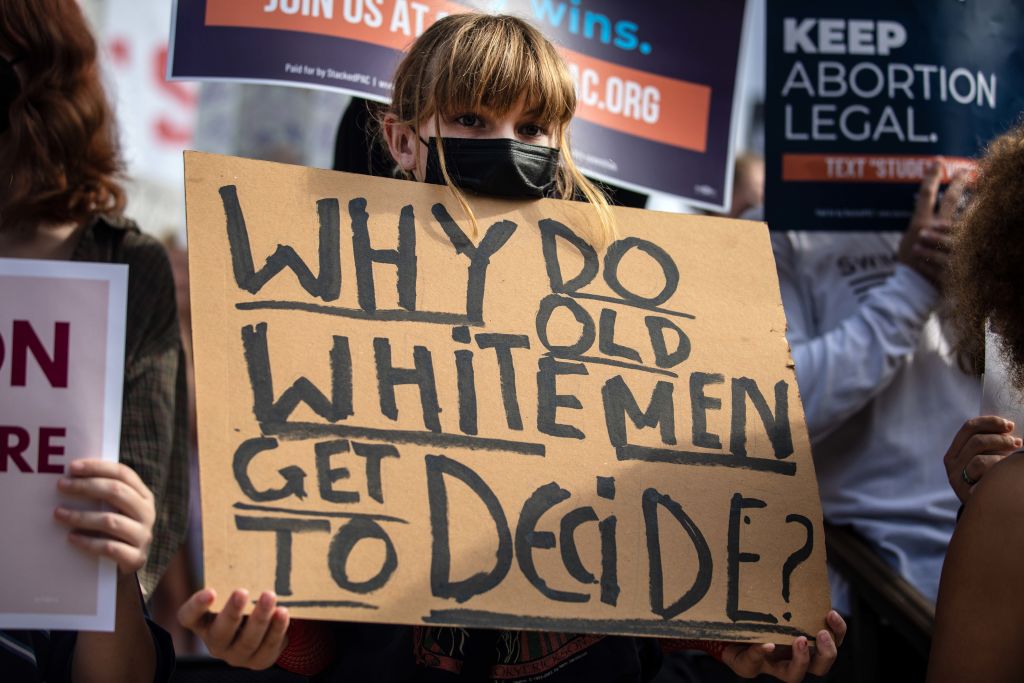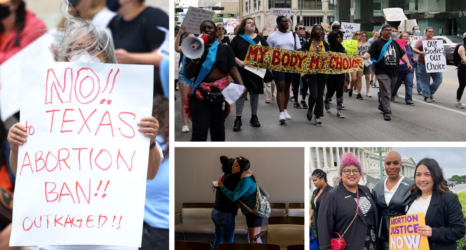We don’t need to wait for Roe v. Wade to be dismantled. We need a political surge at the state level to not only ensure our rights but to also see a future where women are trusted.

Roe v. Wade will be dismantled. It is not a matter of if, but rather when.
Experts expect Roe v. Wade to be overturned with the decision of Dobbs v. Jackson Women’s Health Organization, a case currently being considered by the Supreme Court regarding a Mississippi law that bans abortion after 15 weeks of pregnancy, with a decision expected this summer.
Through Roe v. Wade, the Supreme Court recognized a woman’s right to make decisions about her pregnancy, justifying constitutional protections. It is critical to understand that the Court determined the right to privacy is not absolute and that states have varying interests in safeguarding maternal health and potential life. For example, a state may prohibit abortion after viability—approximately 23-24 weeks—but allow exceptions when it is necessary to protect the woman’s life or well-being.
Then in 1992, the Planned Parenthood v. Casey decision, while credited with saving Roe, further solidified a state’s ability to interfere in reproductive rights by allowing states to pass restrictions as long as they did not place an “undue burden” on the right to an abortion. State legislators and anti-abortion proponents have been testing the boundaries of “undue burden” through legislation and the courts, eroding abortion access ever since. Lawmakers have been able to enact 483 abortion restrictions in the last 10 years alone. This is more than one third of the 1,360 restrictions passed by states since 1973, according to a policy analysis from the Guttmacher Institute, a research and policy organization focused on advancing sexual and reproductive health and rights worldwide.
In 1992, the Supreme Court solidified a state’s ability to interfere in reproductive rights as long as they did not place an “undue burden” on the right to an abortion. State legislators and anti-abortion proponents have been testing the boundaries ever since.
The work to chip away at abortion access has only been expedited with the Trump administration’s three Supreme Court appointmentts: Neil Gorsuch in 2017, Brett Kavanaugh in 2018 and Amy Coney Barrett in 2020, moving the court to a conservative majority.
Despite Roe v. Wade legalizing abortion at the federal level, the restrictions enacted in the states—from requiring (and denying) admitting privileges for doctors; constraints in insurance coverage; mandatory waiting periods; erroneous restrictions on clinics forcing them to close their doors and more—is where the power over reproductive rights has long resided.
The future is no different. The moment Roe v. Wade is overturned, full control of reproductive rights will revert back to the states. Twenty-two state legislatures have laws ready that will ban or severely restrict access to abortions, whereas 15 states and the District of Columbia have laws in place that will protect the right to abortion. Astute activists, resourceful leaders from the business community and brave women and men all over America are continuing to step up to secure our rights, but we must also flood our statehouses to ensure every woman in every state has these rights. We need elected officials who, regardless of their personal choices, will always lead with the agency, dignity and autonomy of women. More women are needed to lead with the principle that a full range of reproductive health options is necessary to be full citizens in this country. More women, and particularly women of color, in the 7,383 state senate and representative seats around the country will yield a better outcome in securing and safeguarding our rights.
Decades of research continue to show that women politicians focus more and do more – like introducing and co-sponsoring bills – to support women’s issues, including reproductive rights. We have the policy examples, like the Women’s Health Protection Act in the Colorado legislature and Hawaii’s House Bill 576, allowing some nurses to perform abortions, that we can even use as templates. With the wave of women elected since 2016, we are seeing more policies encompassing a set of ideas that support the full lifecycle of children, childrearing and families in a care economy. Think tanks like the Center for American Progress even have a full-fledged plan for how states can advance and protect women’s health and rights.
We have also long known that allowing women the opportunity to consider the full range of reproductive choices available has a positive economic impact on women, and therefore, all of us. From individual contributions to the workforce to increased rates of entrepreneurship to impacting generational wealth, according to a study from the Institute for Women’s Policy Research, we all benefit from women’s financial and reproductive health. I know from nearly 20 years of working with women candidates that the ability to make choices over our bodies directly translates to our ability to lead political bodies and to fully exercise our rights as citizens.
Almost 80 percent of Americans support access to abortion in most or all cases. Restricting abortion has shown to also lead to more women finding less safe ways to terminate their pregnancies.
The case is made. The constituents are there. We don’t need to wait for Roe v. Wade to be dismantled. What we need is a political surge at the state level to not only ensure our rights but to also see a future where women are trusted.
For more information about or to get involved with VRL, visit: www.voterunlead.org.
Up next:





